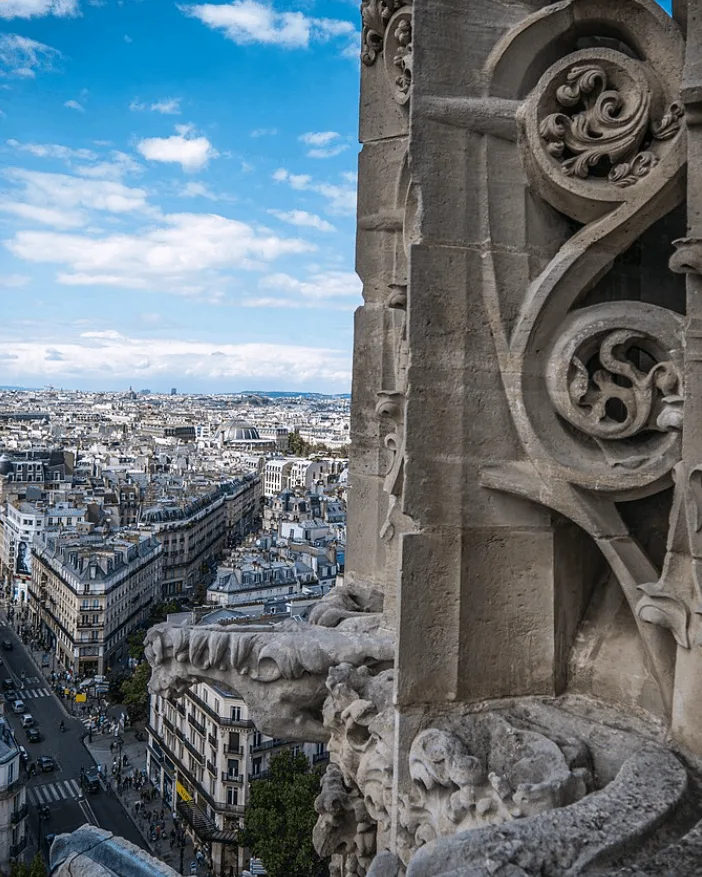One of the most famous towers in the city of Paris used to be the main tower of a 12th-century church.
In this post, you’ll discover all about it as we’ll present the ultimate list of facts about the Tour Saint-Jacques, one of the most remarkable landmarks in Paris.
1. It’s located right in the heart of Paris
The tower is located in the 4th arrondissement of Paris, one of the 20 districts that make up the capital of France. It stands peculiarly alone in a square named after it that forms the intersection of Rue Nicholas Flamel and Rue Rivoli, one of the most famous streets in Paris known for its numerous shops.
Other famous landmarks in the area include various museums such as the Louvre, the Centre Pompidou, and the Musée d’Orsay, as well as the Île de la Cité where we can find famous churches such as the Notre Dame Cathedral and Sainte Chapelle.
Yes, the tower is located right within the historical center of Paris!

2. The tower is all that remains of a former church
The tower is the only thing that remains of a church that was referred to as Saint-Jacques-de-la-Boucherie, which literally translates to “Saint James of the Butchers.”
The church was built in the 12th century and was named this way in the year 1259 because this area used to be the Butchery neighborhood of the city in the Middle Ages.
It also allowed Parisians to easily distinguish this church from the one located on the other side of the Seine named the Saint-Jacques-du-Haut-Pas.
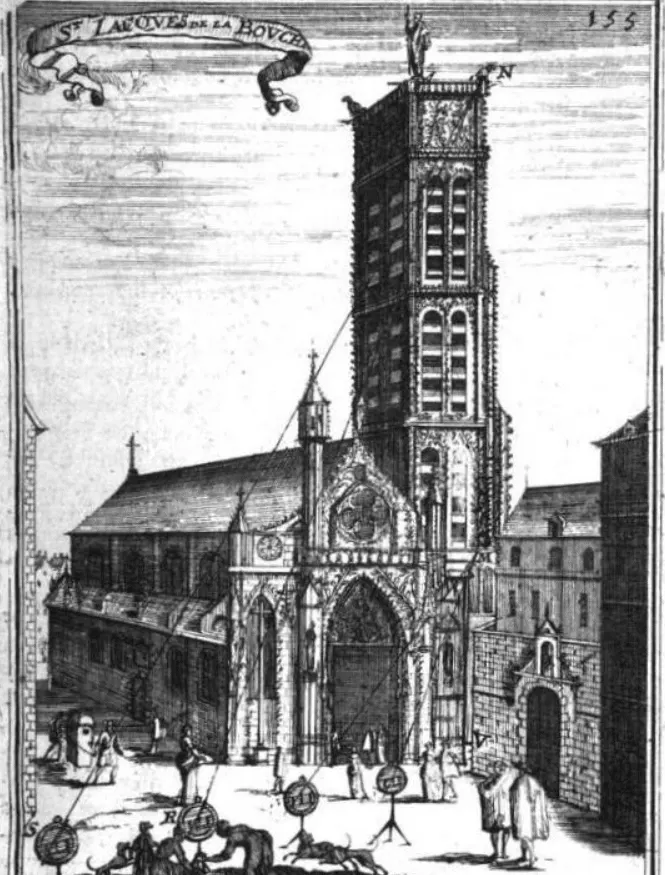
3. The church was destroyed during the French Revolution
So what happened to the Saint-Jacques-de-la-Boucherie church?

During the French Revolution, a lot of religious buildings were demolished and the materials were sold to fund the revolutionary’s cause. This was the faith of this church in the heart of Paris.
Only the tower was allowed to stay put based on a contract regarding the value of building materials extracted from the church. The tower itself was bought back by the City of Paris in 1836 and remains in its possession until today.

4. The Gothic tower was built in the 16th century
The tower was built between 1509 and 1523 in the Flamboyant Gothic style, an architectural style popular in Europe during the late Middle Ages and Renaissance period. This style is characterized by flame-like forms used in its windows and rich decorations.
The tower stands 52 meters (171 feet) tall making it a prominent landmark in the area.
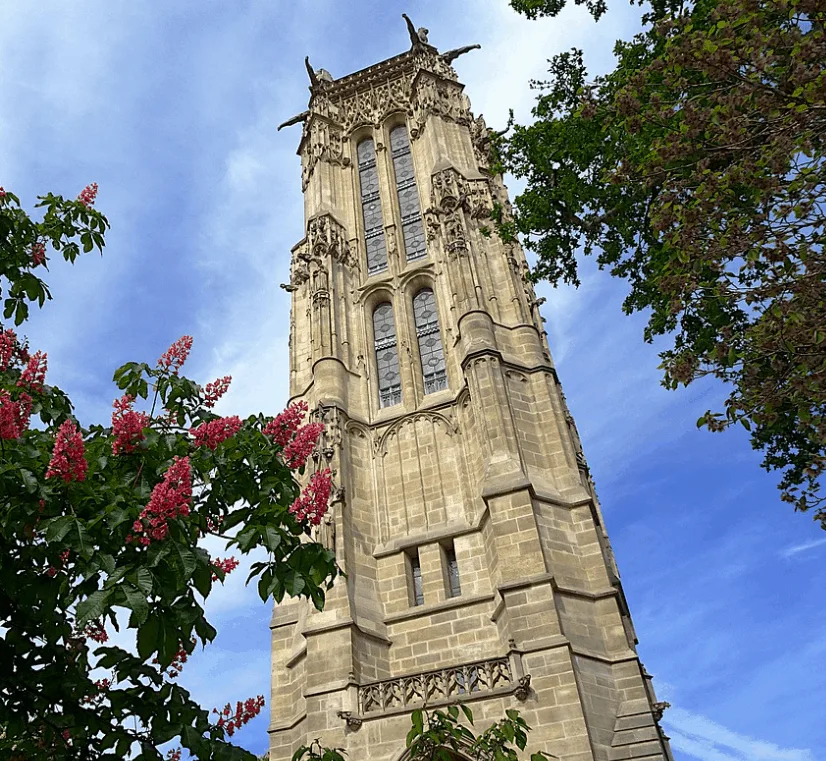
5. It’s on the way to a famous pilgrimage
The Way of Saint James is a popular network of routes that lead all the way to the northwest of Spain in a pilgrimage to Santiago de Compostela. The church was a popular meeting place for pilgrims on the Via Toronensis, known as the “Tours Route.”
The church in Paris was dedicated to Saint James the Greater, one of the 12 apostles of Jesus Christ. The church in Santiago de Compostela is holding the remains of Saint James, the apostle who brought Christianity to Spain.
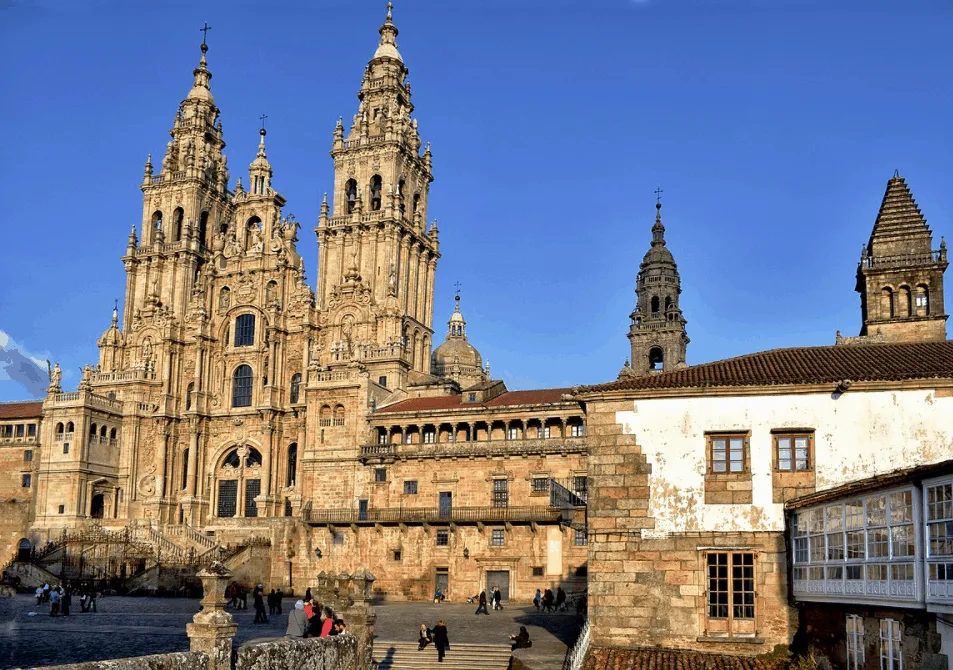
6. It got a completely different purpose in the early 19th century
The days of pilgrims meeting at the church were completely over when the French Revolution started and after the church was demolished, the tower got a completely different purpose.
One of the most remarkable facts about the Tour Saint-Jacques is that it was used as a shot tower to produce bullets. Molten lead was poured from the top and collected in a water basin. The free-fall turned the lead into small balls which could then be used as bullets in shotguns.
Quite a drastic change in usage, don’t you think?

7. The area was completely redesigned in the 19th century
The tower was declared a “Monument Historique” in the year 1862, as the area had been completely redesigned to emphasize the status of the Tour Saint Jacques. Major works were done shortly after the tower was bought by the city in 1836.
The tower was put on a pedestal and the area surrounding it was landscaped and transformed into a public park.
One of the most fascinating facts about the Tour Saint-Jacques is that the Rue de Rivoli was completed in the year 1848 and large amounts of dirt had to be excavated to ensure it was at the same level as the tower’s pedestal. This resembles the tower’s original elevation.
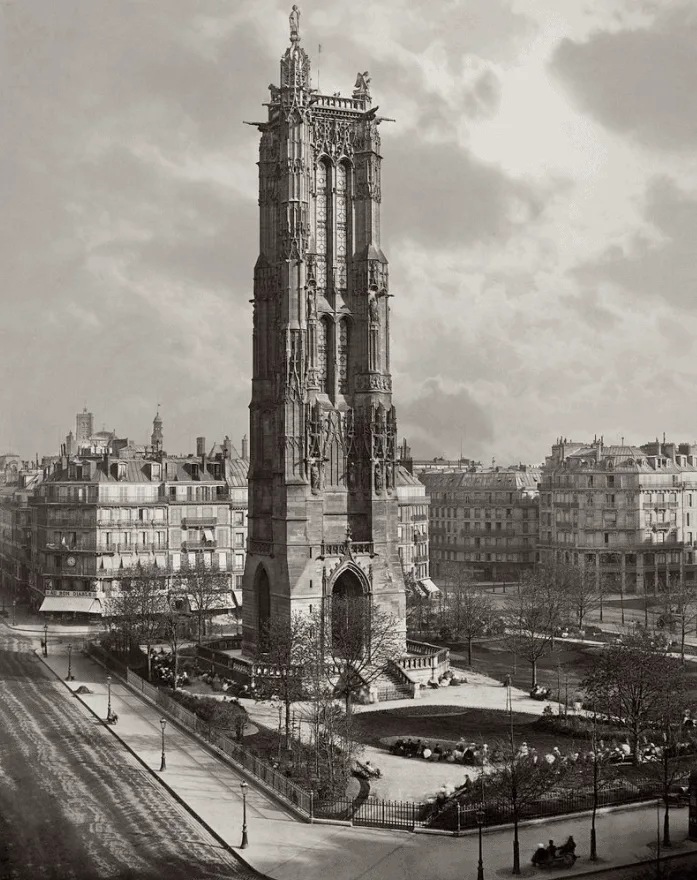
8. The Saint’s statue decorates the top of the tower
The tower is richly ornamented and decorated with statues of 4 apostles of Jesus Christ on its roof. 3 of those are apostles represented by animals such as a lion for Mark, a bull for Luke, and an eagle for John. Matthew is represented by an angel.
The pinnacle of the tower is decorated with a statue of Saint James the Greater, created by French sculptor Paul Chenillon. This replaced the original statue of Saint James which was also destroyed during the French Revolution.
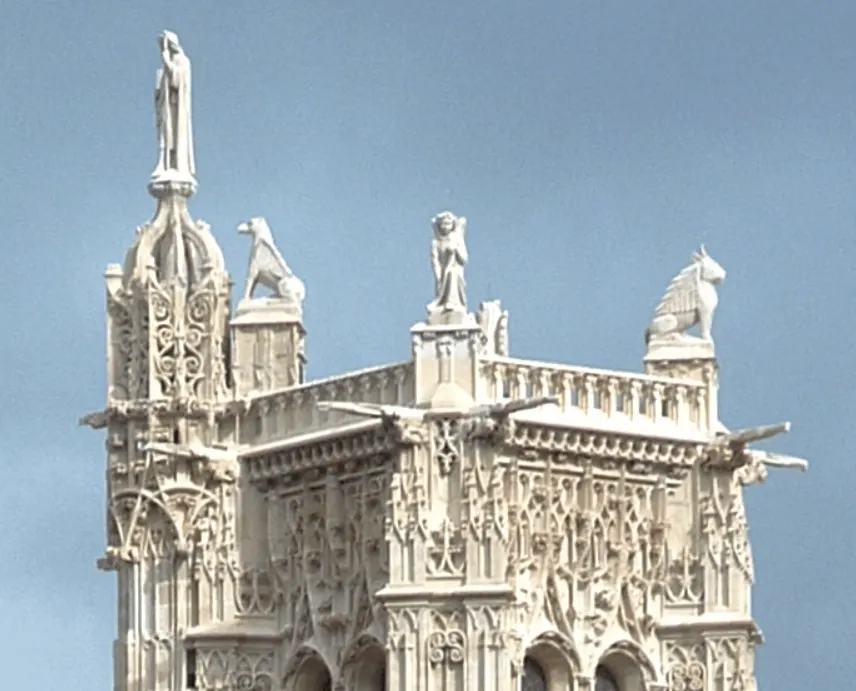
9. The sculpture of a famous French scientist stands at its base
You won’t just find statues decorating the roof of the tower, there’s also a statue of a famous French scientist at the base of it. Here you can find the statue of Blaise Pascale (1623-1662).
The statue was placed here because it’s believed that he performed various experiments related to barometric pressure here, even though it’s not 100% it was done at this church. It might as well have been the one with a similar name on the other side of the Seine, the Saint-Jacques-du-Haut-Pas.

10. A man who supposedly achieved immortality is buried under it
Nicolas Flamel (1330-1418) was a perceived alchemist who was believed to have discovered the philosopher’s stone, a secret elixir that allowed people to achieve immortality.
While he certainly reached old age at the time, he didn’t live forever and was buried underneath the church. One of the streets making up the intersection with the Rue Rivoli, the Rue Nicolas Flamel, was named after him as well.

11. The tower underwent a complete renovation
The tower was crumbling in the early 21st century so a thorough renovation project was started in October 2008, and it lasted until February 2009. The tower was completely covered in scaffolding during this period.
One of the most remarkable facts about the Tour Saint-Jacques is that during this renovation, it was discovered that most of the ornaments and statues of gargoyles and 18 saints decorating the tower’s exterior actually originate from the time that the tower was constructed.
For a long time, it was assumed many of these were replaced during the 19th-century restorations, similar to the statue of Saint James at the top, but this doesn’t appear to be the case!
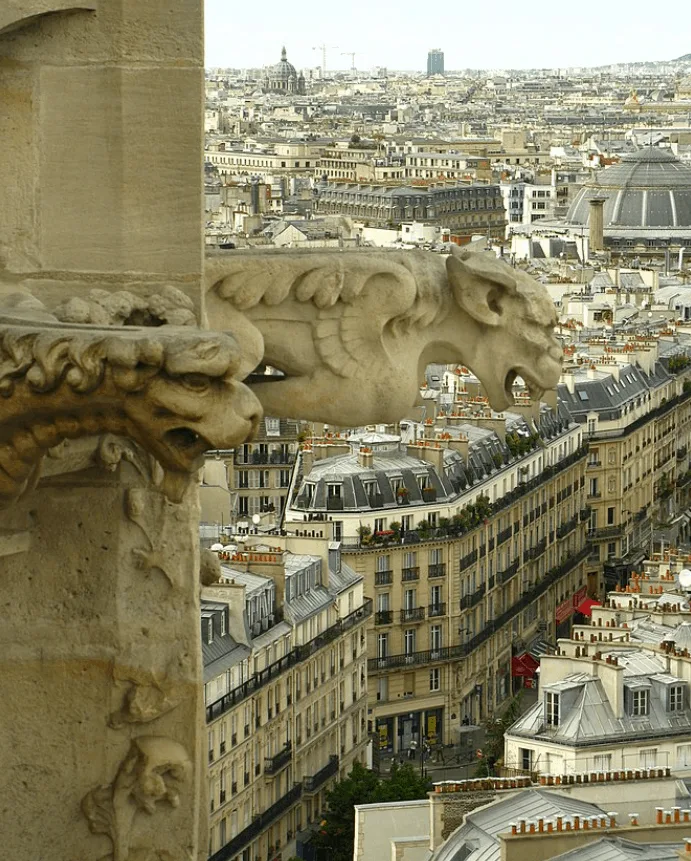
12. The tower’s observation deck offers stunning views of Paris
Want to get one of the most amazing views of Paris imaginable?
The observation deck on top of this tower is not just located over 50 meters above the ground, but also right in the heart of the historical center of the city of Paris!
You do need to order tickets in advance to be able to climb the stairs and not just get an amazing view, but also learn all about this fascinating historical monument in Paris.
